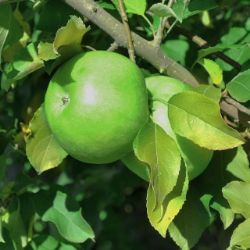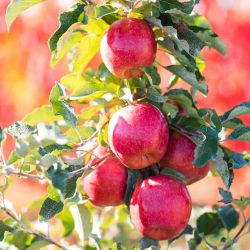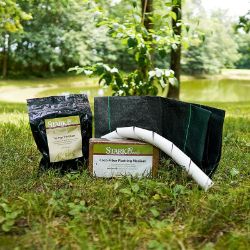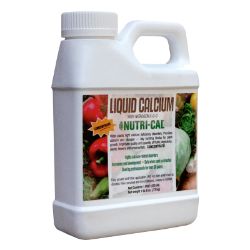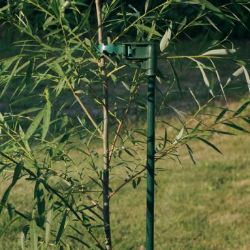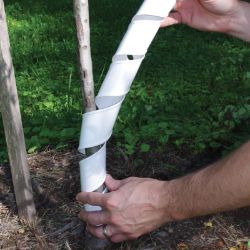Harvesting Apple Trees
Are you ready to enjoy delicious homegrown fruit? Harvest is the time to enjoy the results of your hard work. Keep a few things in consideration as you reap the fruits of your labor: the best time to pick the fruit from your tree, and how to store the fruit.
NOTE: This is part 11 in a series of 11 articles. For a complete background on how to grow apple trees, we recommend starting from the beginning.
Apple trees will start bearing fruit in 2-5 years under normal growing conditions with proper maintenance and care.
It’ll be best if you wait until just the right time to pick the fruit off your trees. Apples tell you they’re ripe by losing the last traces of their green background color and developing full, bright color. Most important, they become less tangy-tart and sweeter in taste. You’ll also notice the seeds turn from white to brown. When picking, just lift them upward quickly. If they’re ready, they will come loose without damage to the tree.
Harvest season for apple trees in most areas begins as early as July and can be as late as November on average, depending on the variety and location. Here is the annual average yield per apple tree:
- Dwarf: 1-4 bushels
- Semi-dwarf: 5-10 bushels
- Standard: 10-20 bushels
- Columnar: 25 pounds
Storage
Cool storage preserves apples for winter enjoyment. Fresh fruit is a special treat during the bleak winter months. Fortunately, many apple varieties keep their fine eating qualities for a long time, with proper storage. If you’re planning to store your apple harvest, pick them a bit early – just as they start to ripen. Handle the fruit carefully to avoid bruising that could develop into spoilage. Do not keep damaged or potentially infested fruit for storing, as they will break down quickly and negatively affect the integrity of the rest of your apple harvest.
The ideal storage environment is humid and cool, around 32ºF to 40ºF. You can place your apples in perforated plastic freezer bags and keep them in your refrigerator. Any cool area at home, like a basement, cellar, or unheated porch should also be fine for a while. Bring the apples out into room temperature when you’re ready to use them.
It’s best to inspect stored fruit every week or so to check for any spoilage. That way, you can remove any apples that are developing soft spots or brown areas. This also keeps spoilage from spreading to nearby fruit before it’s too late.















